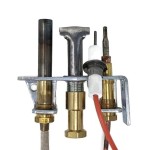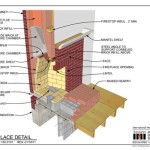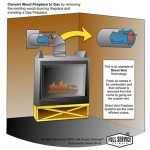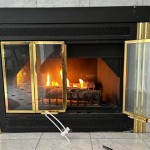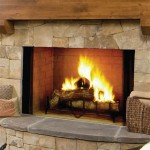Plug-In Fireplace Heater: A Comprehensive Guide
Plug-in fireplace heaters represent a convenient and increasingly popular method for providing supplemental warmth to individual rooms or small spaces. These units mimic the aesthetic appeal of traditional fireplaces while offering the portability and ease of use associated with electric space heaters. This article delves into the functionalities, benefits, considerations, and types of plug-in fireplace heaters, providing a comprehensive understanding of this heating appliance.
The core function of a plug-in fireplace heater revolves around converting electrical energy into heat. Most units employ resistance heating elements, similar to those found in other electric heaters. When electricity flows through these elements, they generate heat, which is then circulated into the room, often with the assistance of a fan. The visual aspect of a fireplace is achieved through simulated flames, typically created using LED lights and reflective surfaces. The intensity and movement of these flames can often be adjusted independently of the heating function, allowing users to enjoy the ambiance of a fire without generating heat.
The appeal of plug-in fireplace heaters stems from a combination of factors. They offer a relatively inexpensive heating solution compared to installing and maintaining traditional fireplaces or central heating systems. Their portability allows for targeted heating where it is needed most, reducing energy consumption by avoiding the need to heat entire homes. The visual component adds a touch of warmth and comfort to a room, enhancing its aesthetic appeal. Furthermore, many models come equipped with safety features, such as overheat protection and tip-over shut-off mechanisms, contributing to safe operation.
Energy Efficiency and Cost Considerations
The energy efficiency of plug-in fireplace heaters is a crucial consideration for potential buyers. While they offer targeted heating, their operational costs depend on their wattage and the duration of use. Generally, the higher the wattage, the more electricity the heater consumes, resulting in higher energy bills. It’s important to compare the wattage of different models and consider the size of the space to be heated. Over-sizing a heater can lead to unnecessary energy consumption, while under-sizing it may not provide adequate warmth.
The energy efficiency can also be assessed through Energy Efficiency Ratio (EER) or Coefficient of Performance (COP) ratings, if provided by the manufacturer. A higher EER or COP indicates a more efficient heater. It is also important to consider the thermostat settings. Maintaining a consistent temperature, rather than constantly adjusting the thermostat, can help to optimize energy usage. Programmable thermostats, available on some models, further enhance energy efficiency by allowing users to schedule heating cycles according to their needs and preferences.
It is crucial to understand that plug-in fireplace heaters operate on standard electrical outlets and draw a significant amount of power. Overloading electrical circuits with multiple high-wattage appliances can pose a safety hazard. Using a dedicated circuit for the heater, especially if it is a high-wattage model, is recommended to prevent overloading and potential fires. Regular maintenance, such as cleaning the heating elements and air vents, can also improve efficiency and prevent overheating.
Safety Features and Operational Guidelines
The safe operation of plug-in fireplace heaters is paramount. Most models incorporate multiple safety features designed to minimize risks. Overheat protection systems automatically shut off the heater if it reaches an unsafe temperature, preventing potential fires. Tip-over shut-off mechanisms deactivate the heater if it is accidentally knocked over, further reducing the risk of fire or burns.
It is essential to follow the manufacturer's instructions regarding placement and operation. Heaters should be placed on a stable, level surface, away from flammable materials such as curtains, furniture, and bedding. A minimum clearance of three feet is generally recommended. Never cover the heater or block the air vents, as this can cause overheating. Avoid using extension cords unless absolutely necessary, and use a heavy-duty extension cord that is rated for the heater’s wattage.
Regularly inspect the power cord and plug for damage. If any damage is detected, discontinue use and have the heater repaired by a qualified technician or replaced. Never attempt to repair the heater yourself, as this can pose a serious electrical hazard. Ensure that smoke detectors are installed and functioning properly in the room where the heater is used. Never leave the heater unattended while it is in operation, especially when children or pets are present.
Types of Plug-In Fireplace Heaters and Their Applications
Plug-in fireplace heaters come in various designs and styles to suit different aesthetic preferences and heating needs. Freestanding models are the most common type, offering portability and flexibility in placement. They can be easily moved from room to room as needed. Wall-mounted models offer a more permanent installation, saving floor space and creating a focal point in the room. These models often have a slimmer profile and can be integrated into existing décor.
Electric fireplace inserts are designed to be placed into existing fireplace openings, providing a convenient way to convert a traditional fireplace into an electric one. These inserts often come with realistic flame effects and can be operated with or without heat. Mantel fireplaces combine a fireplace heater with a decorative mantel, providing a complete and aesthetically pleasing heating solution. These models typically offer storage space and can serve as a focal point in a living room or den.
The choice of fireplace heater depends on the size of the room, the desired level of heat, and the user’s aesthetic preferences. For smaller rooms, a lower-wattage heater may be sufficient. For larger rooms, a higher-wattage heater with a fan may be necessary to distribute the heat effectively. Some models offer adjustable heat settings, allowing users to customize the level of warmth. Consider the features and functionality of different models before making a purchase. Remote control operation, adjustable flame effects, and programmable thermostats are some of the features that can enhance the user experience.
Beyond these factors, it's important to acknowledge the advancements in flame simulation technology. Early models often featured rudimentary flame effects that lacked realism. Modern plug-in fireplaces, however, employ sophisticated LED lighting and projection techniques to create highly convincing flame patterns. Some even include features like ember beds that glow and flicker, further enhancing the illusion of a real fire. This improved realism contributes significantly to the overall ambiance and appeal of these heaters.
The development of smart fireplace heaters also deserves mention. These units integrate with smart home ecosystems, allowing users to control them remotely via smartphone apps or voice commands. Features such as scheduling, temperature adjustment, and even flame effect customization can be managed from anywhere, providing added convenience and control. This integration with smart home technology represents a significant step forward in the evolution of plug-in fireplace heaters, further enhancing their usability and appeal.
Finally, it's important to consider the environmental impact of plug-in fireplace heaters. While they do consume electricity, they offer a cleaner alternative to traditional wood-burning fireplaces, which can contribute to air pollution. Electric heaters do not produce smoke, soot, or other harmful emissions. However, the electricity used to power them may still be generated from fossil fuels, depending on the local energy grid. Choosing a heater with high energy efficiency and using it responsibly can help to minimize its environmental footprint. Furthermore, using renewable energy sources, such as solar or wind power, to power the heater can further reduce its environmental impact.

Electric Inset Fireplace Heater Fire Place White Wooden Mantel 30inch

Flametek Reo Electric Stove The Fireplace Company

Freestanding Electric Fireplace Heaters Fireplaces Direct

Livingandhome Retro Stove Fireplace Electric 6 Flame Colors Brightness Adjustable With Remote Control 30 Inch Diy At B Q

18 Freestanding Electric Fireplace Heater Recessed Stove With Adjustable Led Flame Insert Safer Plug And Sensor Remote Control Console Center Not Included Ca

Traditional Small Electric Stove Heater Dunelm

Portable 500w Electric Plug In Heater Ceramic Space For Home Fan Thermostat Control Fireplace Fruugo

Free Standing Electric Fireplace Stove Heater With Realisti

Do Electric Fires Just Plug In Direct Fireplaces

Do Electric Fires Just Plug In Direct Fireplaces
Related Posts

